Asia Travel Pulse
Film Tourism in Thailand Soars with Jurassic World: Rebirth and Southern Thailand’s Stunning Locations
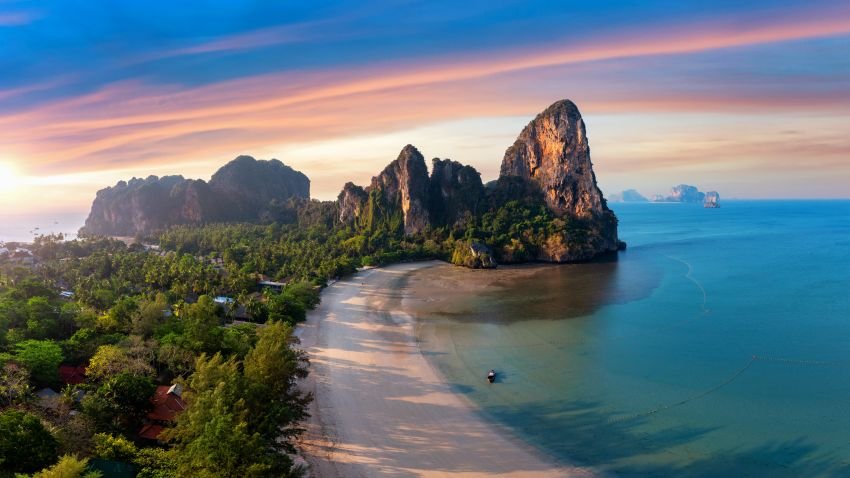
Tuesday, August 5, 2025
The highly anticipated Jurassic World: Rebirth soared into theatres on July 2, bringing the breathtaking jungles and limestone cliffs of Krabi, Phang-Nga, and Trang to movie screens around the world. Shooting the film here did more than deliver stunning visuals; it also showcased the exceptional film-friendly qualities of Thailand. From the varied landscapes to smooth logistics and top-notch crew support, the kingdom has once again confirmed its place on the global map as a premier location for big-budget movie productions.
A week after the film’s debut, a global press team—joined by stars, crew, and director Gareth Edwards—landed in Thailand for a whirlwind tour from July 30 to August 3. The mission: to spotlight the kingdom as an unbeatable filming hub and to champion film tourism. Jurassic World: Rebirth alone delivered more than 400 million Baht in economic benefits and created over 2,200 jobs in the southern provinces, from set construction to accommodation and transport. The spotlight on the region is now brighter than ever, positioning Thailand as a must-visit stop on the worldwide travel map.
Film Tourism and Its Impact on Southern Thailand
The Jurassic World film’s use of Southern Thailand’s picturesque landscapes has been pivotal in bringing international attention to the area. The event served as part of the Tourism Authority of Thailand’s (TAT) broader “Location Thailand” initiative, aimed at utilising film to promote Thai destinations worldwide. With the growing trend of “set-jetting” — a form of travel where tourists visit locations featured in films and TV series — the initiative has effectively captured the world’s attention, igniting renewed interest in Southern Thailand’s cinematic vistas.
The global media event began with an exclusive welcome dinner at Phuket’s renowned Trisara resort, followed by immersive visits to key filming locations under the themes of Sea, Land, and Air. These locations mirrored major scenes from the Jurassic World film, offering participants unique and immersive experiences such as rappelling down cliffs at Railay Beach and exploring coastal trails. These experiences not only showcased the breathtaking beauty of Thailand but also allowed international media and influencers to generate original content that continues to amplify the film’s promotional reach.
The TAT’s Role in Promoting Thailand’s Film Tourism Strategy
The TAT’s active involvement in the promotion of Thailand as a destination for film productions has played a key role in the country’s recent success. The “Location Thailand” initiative, which emphasises global entertainment partnerships, has proven to be a strategic move in promoting the nation’s natural beauty and cultural assets. By supporting international productions, Thailand continues to build its reputation as a desirable filming destination, offering not only spectacular landscapes but also a professional and seamless experience for filmmakers.
The success of the Jurassic World: Rebirth event was further celebrated by Universal Pictures Home Entertainment’s senior executives, who praised the collaboration with the TAT. Their recognition of Thailand’s outstanding support in facilitating this international production demonstrates the growing strength of the country’s film tourism industry.
According to the Thailand Film Office, part of the Ministry of Tourism and Sports, Thailand has hosted 279 international film productions during the first half of 2025, generating over 2.8 billion baht in economic benefits. Notably, the United States emerged as the top spender on film production in Thailand, with significant contributions from other countries such as South Korea, France, Singapore, and Germany.
Expanding Thailand’s Film Tourism Portfolio
In addition to Jurassic World: Rebirth, Thailand has become the filming hub for numerous high-profile international productions, including the upcoming Alien: Earth series, premiering on Disney+ Hotstar on August 13. This production, with a budget exceeding 2.8 billion baht, is the largest foreign series investment in Thailand in over three decades. Filmed across seven provinces over nearly two years, Alien: Earth employed over 24,000 Thai crew members, further establishing Thailand as a key player in the global film industry.
Other international titles filmed in Thailand, such as The White Lotus Season 3 and Fast & Furious 9, have reinforced the country’s reputation for offering diverse and cinematic backdrops. The TAT continues to leverage these global productions as part of its larger strategy to attract international tourists and film fans alike, turning iconic cinematic moments into real-world travel inspiration.
Economic Benefits and Long-Term Impacts
The economic benefits of film tourism extend beyond immediate revenue from film productions. According to TAT’s estimates, the influx of tourists drawn by cinematic landscapes has a lasting impact on local economies, creating jobs, boosting local businesses, and supporting the sustainable growth of Thailand’s tourism sector. For instance, the filming of Jurassic World: Rebirth brought an immediate economic benefit to Southern Thailand, while the ongoing success of major international productions continues to generate sustained interest in the region.
The collaboration between the TAT and major film studios such as Universal Pictures Home Entertainment exemplifies how the intersection of film and tourism can create mutual benefits. As international audiences flock to Thailand to experience the stunning locations featured in blockbuster films, the country gains increased visibility and a stronger position as a desirable travel destination.
Looking Ahead: Thailand’s Future as a Film Tourism Leader
The Thailand Authority of Tourism (TAT) has a solid plan for boosting film tourism, and it’s working. Their cash-back incentives, easy production support, and strong global marketing keep Thailand front and centre for movie-makers. With interest in “set-jetting”, or travelling to see film locations, climbing steadily, Thailand’s careful, long-term thinking about film tourism is making sure it stays a must-visit place for directors and holidaymakers alike.
More blockbuster movies and hit series are choosing Thailand for their backdrops, drawing worldwide audiences and encouraging new travellers to walk those same paths. With a deep history, vibrant cultures, and stunning scenery, Thailand’s place in the film tourism spotlight is secure and only set to expand in the future.
Asia Travel Pulse
China, Malaysia, India, Russia, and South Korea Lead the Way as Bangkok Tops Global Travel Lists for Summer 2025

Thursday, August 7, 2025
Author: TTW News Desk
As summer 2025 draws near, Bangkok has once again emerged as one of the top global travel destinations, with travelers from China, Malaysia, India, Russia, and South Korea driving the surge in bookings. These countries are leading the charge due to a combination of factors: Bangkok’s rich cultural heritage, modern amenities, and exceptional hospitality, which continue to attract visitors seeking both authentic experiences and luxury. The Thai capital’s appeal lies in its unique ability to blend vibrant street culture with world-class shopping, historic landmarks, and sustainability-focused tourism practices. As Bangkok secures its position at the top of global travel lists, the influx of tourists from these regions underscores the city’s enduring popularity despite global challenges.
A City That Blends Tradition and Modernity
Bangkok’s lasting popularity is a testament to its ability to blend its rich cultural heritage with modern conveniences. From ancient temples and palaces to cutting-edge shopping malls and vibrant nightlife, the city offers a diverse array of experiences that appeal to a wide range of travelers. Visitors come for the authentic street food culture, bustling markets, and iconic landmarks like the Grand Palace and Wat Pho, while also enjoying world-class hotels, restaurants, and shopping destinations.
In addition to its cultural draw, Bangkok is known for its high standards of service and international safety protocols, ensuring that travelers from all over the world can experience the city with confidence. This combination of heritage, modernity, and hospitality makes Bangkok a unique and enduring favorite for global travelers.
Experiential and Sustainable Travel Trends
The growing demand for experiential travel is a key factor behind Bangkok’s continued success. Travelers are increasingly seeking destinations that offer more than just sightseeing—they are looking for deeper cultural connections and opportunities to engage with local traditions. Bangkok excels in this regard, offering visitors the chance to immerse themselves in the city’s history and culture while still enjoying the convenience and luxury of modern amenities.
Moreover, Bangkok has positioned itself as a sustainable travel destination, promoting responsible tourism practices. Efforts to protect the city’s natural and cultural resources are part of a broader push by the Thai government to ensure that tourism growth does not come at the expense of the environment or local communities. This focus on sustainability has resonated with travelers who are more conscious about their environmental impact.
Tourism Trends Reflect Bangkok’s Enduring Popularity
Thailand’s tourism statistics further highlight Bangkok’s status as a top global destination. From January 1 to August 3, 2025, the country welcomed over 19.6 million international visitors, with Bangkok continuing to be the most popular entry point. The top countries sending tourists to Thailand this year include:
China: 2,733,160 visitors
Malaysia: 2,700,103 visitors
India: 1,390,693 visitors
Russia: 1,124,467 visitors
South Korea: 918,372 visitors
China’s return to the top spot reflects a rebound in outbound travel from the region, following the lifting of pandemic restrictions. This resurgence in Chinese tourists is significant for Thailand, which has long been a favored destination for travelers from China. The steady influx of visitors from other regions, including Malaysia, India, and South Korea, further demonstrates Bangkok’s widespread appeal across Asia and beyond.
Promoting Thailand as a Global Tourism Leader
The Thai government continues to play a key role in maintaining Bangkok’s status as a leading global tourism destination. A focus on promoting sustainable tourism, preserving cultural heritage, and supporting local businesses is central to the country’s tourism strategy. Through initiatives that prioritize responsible tourism and environmental protection, Thailand is ensuring that its tourism sector grows in a way that benefits both travelers and local communities.
Additionally, the government has placed a strong emphasis on enhancing Bangkok’s image as a safe, modern, and culturally rich city that offers an exceptional travel experience. With ongoing efforts to improve infrastructure and services, Bangkok is positioning itself to remain at the forefront of global travel trends.
A Vibrant and Resilient Bangkok
Although Bangkok is commonly linked with heavy traffic and bustling streets, the city’s enduring appeal is evident in its ability to remain a leading destination for global travelers. Whether it’s exploring ancient temples, enjoying world-class shopping, or indulging in its diverse culinary scene, Bangkok offers something for everyone. The city’s ability to adapt to the changing demands of global travelers while staying true to its cultural roots ensures that it remains an exciting and relevant destination for years to come.
As global tourism continues to recover, Bangkok stands as a testament to the enduring appeal of destinations that offer a rich cultural experience, modern amenities, and a commitment to sustainability. The city’s success in attracting millions of visitors, despite the challenges of recent years, reflects its unique ability to evolve and thrive in a rapidly changing world.
Tourists from China, Malaysia, India, Russia, and South Korea are driving Bangkok’s rise as one of the top global destinations for summer 2025, thanks to its rich culture, modern amenities, and focus on sustainable tourism.
In 2025, Bangkok continues to be a beacon of cultural richness, hospitality, and innovation, making it one of the most exciting places to visit for travelers seeking unforgettable experiences.
Asia Travel Pulse
2025 Travel Breakthrough: Top Asian Passports with Verified Visa-Free Access, All You Need to Know
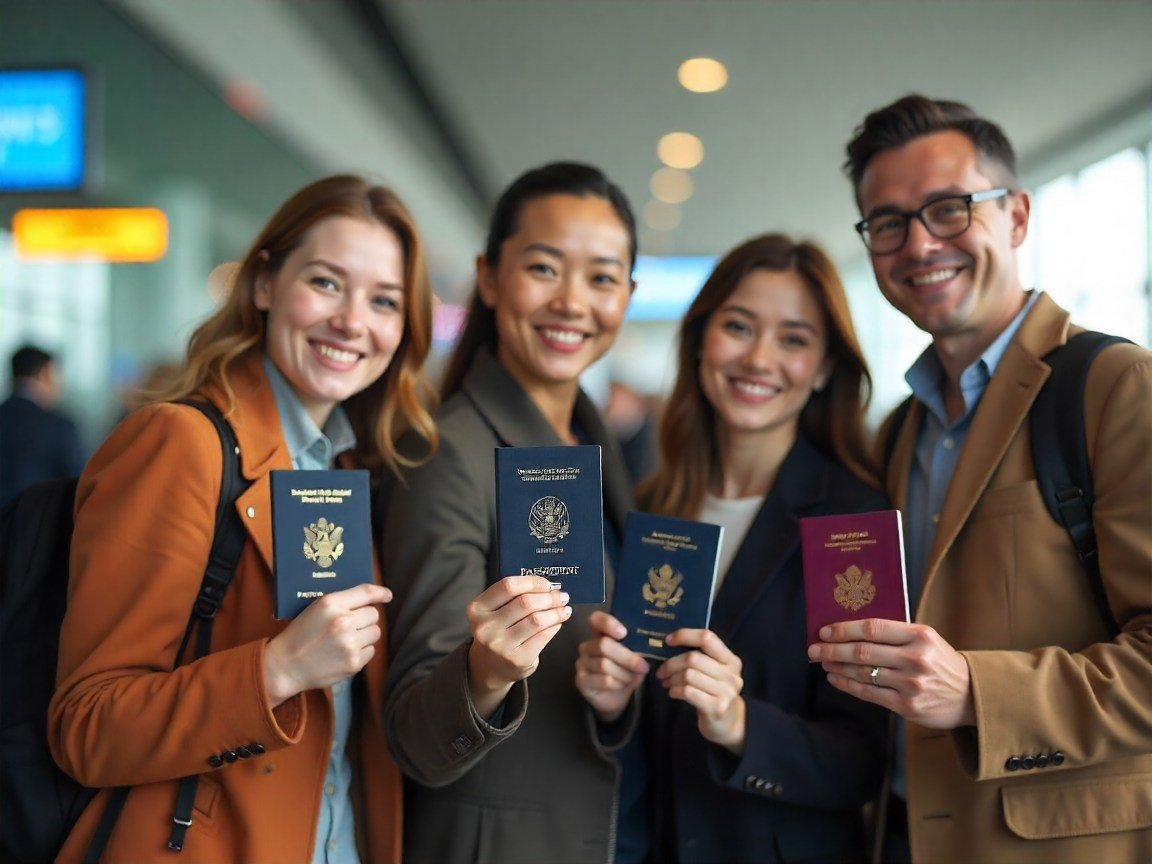
Thursday, August 7, 2025
Author: TTW News Desk
As global mobility steadily recovers and expands in 2025, certain Asian passports have become key enablers of seamless international travel, offering unparalleled visa-free access to a growing number of destinations. Supported by government-issued visa exemption agreements, Japan, South Korea, Singapore, Malaysia, the United Arab Emirates and Hong Kong SAR are leaders in the international community with regards to visa-free access. This document analyzes how the leading Asian passports are transforming travel in 2025, drawing from credible sources, including government ministries and consular officials.
Japan continues to be a leader in visa-free access, with entry to 72 countries and regions as confirmed by the Ministry of Foreign Affairs (MOFA). Japanese nationals enjoy short-term visa-free access to key regions across Europe, Asia and the Americas. Furthermore, Japan’s reciprocal visa recognition agreements with countries like Singapore, Malaysia and South Korea reinforce its role in fostering interconnected mobility within Asia.
The South Korean passport remains among the top-ranked in Asia, particularly due to its participation in official visa waiver programs, most notably with Japan and ASEAN member states. While the Ministry of Foreign Affairs of South Korea does not publish a complete list, Japan officially recognizes South Korea as a visa-exempt country, providing visa-free access to its citizens. Additionally, the temporary waiver of the Korean Electronic Travel Authorization (K-ETA) through 2025 further enhances South Korea’s travel prospects.
The Singaporean passport holds a significant place among Asia’s most powerful travel documents, backed by an extensive network of bilateral agreements. Although a consolidated list is not available, countries such as Japan and members of the European Union (EU) provide visa-free access for Singaporean passport holders. Singapore’s consistency in diplomacy and visa facilitation ensures its continued leadership in global mobility.
With visa-free access to over 180 countries, the Malaysian passport is another major player in Asia’s travel landscape. Official information from Japan’s Ministry of Foreign Affairs shows that Malaysian citizens hold visa exempt status which allows them to visit Japan for up to 90 days. This level of access granted reflects the strides made by ASEAN in facilitating travel within the region.
Although not part of East Asia, the UAE passport is a force to be reckoned with, offering visa-free access or visa-on-arrival access to more than 82 destinations globally, according to the UAE Ministry of Foreign Affairs. The UAE’s strategic diplomatic policies continue to unlock new travel opportunities across Africa, Asia, and Europe, positioning it as a major hub for global mobility.
Hong Kong SAR, as part of China but with its own distinct global policies, continues to provide one of the most powerful passports in Asia. Official listings from the Japanese government confirm that Hong Kong passport holders enjoy visa-free access. This autonomy in travel agreements ensures that the Hong Kong SAR passport remains a highly mobile travel document in 2025.
The year 2025 sees top Asian passports continuing to dominate global mobility rankings. These passports, underpinned by transparent visa policies and government-to-government agreements, offer enhanced visa-free access to international travel. Japan, South Korea, Singapore, Malaysia, UAE and Hong Kong SAR stand to receive tangible rewards from their strong international relations, placing their people ahead of the international travel renaissance. Through encouraged international visa-free travel, and consistent international relations, these countries serve as a model for the future of unimpeded travel in Asia and the rest of the world.
Government Sources:
- Ministry of Foreign Affairs of Japan (MOFA)
- Ministry of Foreign Affairs of South Korea
- Singapore Ministry of Foreign Affairs
- Ministry of Foreign Affairs of Malaysia
- UAE Ministry of Foreign Affairs
- Hong Kong SAR Government Official Travel Information
Asia Travel Pulse
Thailand Aims to Revive Tourism as Chinese Visitor Numbers Plummet
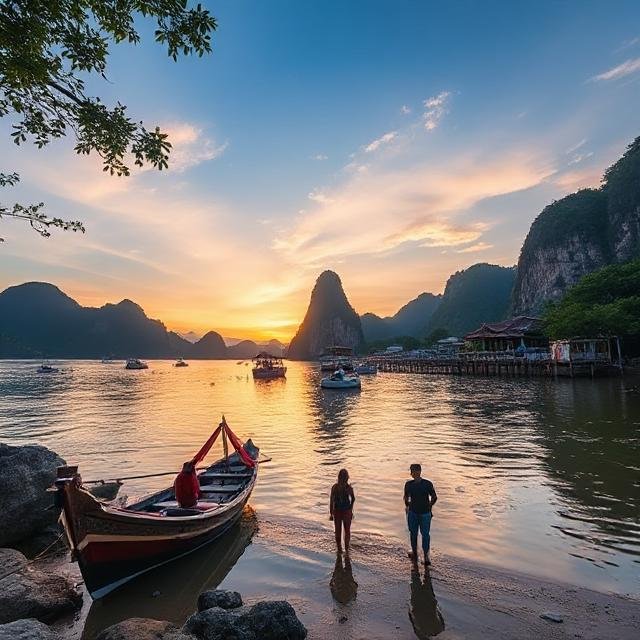
Wednesday, August 6, 2025
Author: TTW News Desk
Tourism in Thailand, an important pillar of its economy, is having a tough year in 2025. International tourist arrivals have fallen 5%, led predominantly by a fall in visitors from China and competition from alternative destinations in Asia.
Between January 1 and July 5, 2025, Thailand received 16.8 million international visitors, lower than 17.7 million during the same period last year. The largest decrease was from neighboring nations, which dropped by 12.2%, with East Asia also experiencing a steep 24.8% decline. The main reason being the smaller number of Chinese tourists, which dipped by 34.2% from pre-pandemic 2019 levels.
Shifting Tourist Demographics
While long-haul travelers from markets like India, Japan, Singapore, Australia, and the U.S. have increased, their numbers remain relatively small, accounting for only 28% of total arrivals. These tourists typically spend more, but their growth cannot fully compensate for the loss of Chinese visitors.
Before the pandemic, China was Thailand’s largest tourism market, supplying 28% of all international arrivals—about 11.1 million visitors in 2019. However, Chinese tourists now make up just 13.6% of total arrivals. Estimates suggest that 2025 will mark the first time in over a decade (excluding COVID-19 years) that Chinese tourist numbers fall below 5 million.
Government Measures to Revive Tourism
Tourism contributes 20% of Thailand’s GDP, making its recovery crucial. The Thai government has introduced several initiatives to counter the downturn:
1. Delaying the Tourist Fee
Originally set for 2025, the government postponed the “Kha Yeap Pan Din” fee (a 300 THB charge for air arrivals and 150 THB for land/sea entries) to mid-2026. The funds will enhance tourist facilities and provide insurance coverage for foreign visitors.
2. Subsidies for Charter Flights
To attract more visitors, authorities are offering 350,000 THB per charter flight. New partnerships with travel agencies in Chongqing, Lanzhou, and Hangzhou aim to bring an additional 150,000 Chinese tourists to Thailand.
3. Digital Entry System
Earlier in 2025, Thailand launched a digital entry system, replacing paper-based immigration checks with a faster, online registration process to improve the traveler experience.
Factors Behind the Decline in Chinese Tourists
Several key factors contribute to the drop in Chinese visitors:
1. Economic Slowdown in China
China’s economic challenges, including a sluggish property market and weaker consumer spending, have led to reduced outbound tourism. Middle-class travelers, who once fueled Thailand’s tourism boom, are now more cautious with discretionary spending.
2. Rising Competition from Other Destinations
Countries like Vietnam, Japan, and South Korea have aggressively marketed themselves to Chinese tourists, offering easier visa policies and new attractions. Japan’s weakened yen, for example, has made it a more affordable option compared to Thailand.
3. Changing Travel Preferences
Post-pandemic, Chinese tourists are favoring shorter trips and domestic travel over long international vacations. The popularity of “revenge travel” within China has also diverted potential visitors away from overseas destinations.
4. Safety Concerns and Negative Perceptions
Reports of scams targeting tourists and safety incidents in Thailand have circulated on Chinese social media, damaging the country’s reputation as a secure destination. The Thai government is working to address these concerns through tighter regulations and public awareness campaigns.
Private Sector Initiatives in Thailand
Hotels, airlines, and tour operators are also adapting to the changing market:
- Discounts and Bundled Packages – Many resorts are offering all-inclusive deals to attract budget-conscious travelers.
- Luxury and Wellness Tourism – High-end hotels are focusing on medical tourism and wellness retreats, particularly targeting European and Middle Eastern visitors.
- Sustainable Tourism – Eco-friendly resorts and community-based tourism projects are gaining traction among environmentally conscious travelers.
Future Outlook for Thai Tourism
Experts are of the view that these stimulus steps will begin yielding fruit by the end of 2025. Assuming no serious disruptions, Chinese tourist arrivals may return to 70-80% of pre-pandemic levels towards the end of 2026.
Thailand, despite present difficulties, is a leading travel destination, and the efforts of the government seek to reinstate it as a player in the international tourism arena. The emphasis currently is on diversifying sources of visitors and improving traveler convenience in a bid to develop long-term growth.
-

 Brand Stories2 weeks ago
Brand Stories2 weeks agoBloom Hotels: A Modern Vision of Hospitality Redefining Travel
-

 Brand Stories2 weeks ago
Brand Stories2 weeks agoCheQin.ai sets a new standard for hotel booking with its AI capabilities: empowering travellers to bargain, choose the best, and book with clarity.
-

 Destinations & Things To Do3 weeks ago
Destinations & Things To Do3 weeks agoUntouched Destinations: Stunning Hidden Gems You Must Visit
-

 Destinations & Things To Do2 weeks ago
Destinations & Things To Do2 weeks agoThis Hidden Beach in India Glows at Night-But Only in One Secret Season
-

 AI in Travel3 weeks ago
AI in Travel3 weeks agoAI Travel Revolution: Must-Have Guide to the Best Experience
-

 Brand Stories1 month ago
Brand Stories1 month agoVoice AI Startup ElevenLabs Plans to Add Hubs Around the World
-

 Brand Stories4 weeks ago
Brand Stories4 weeks agoHow Elon Musk’s rogue Grok chatbot became a cautionary AI tale
-

 Brand Stories2 weeks ago
Brand Stories2 weeks agoContactless Hospitality: Why Remote Management Technology Is Key to Seamless Guest Experiences
-

 Asia Travel Pulse1 month ago
Asia Travel Pulse1 month agoLooking For Adventure In Asia? Here Are 7 Epic Destinations You Need To Experience At Least Once – Zee News
-

 AI in Travel1 month ago
AI in Travel1 month ago‘Will AI take my job?’ A trip to a Beijing fortune-telling bar to see what lies ahead | China



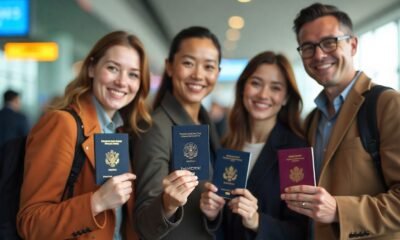

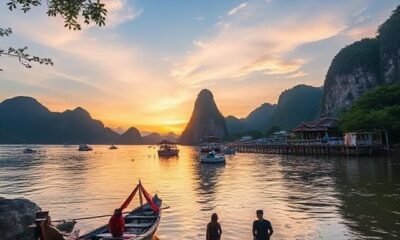







You must be logged in to post a comment Login